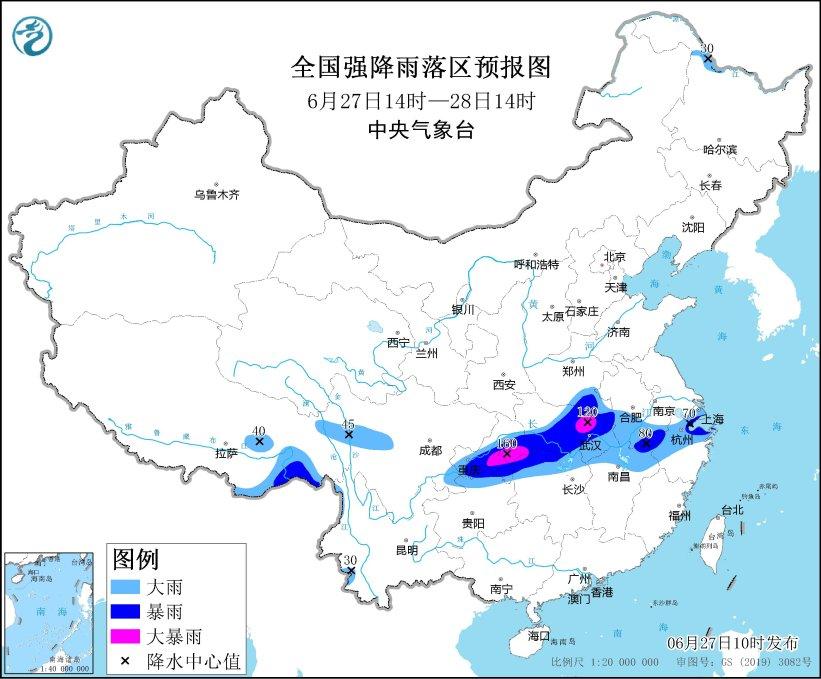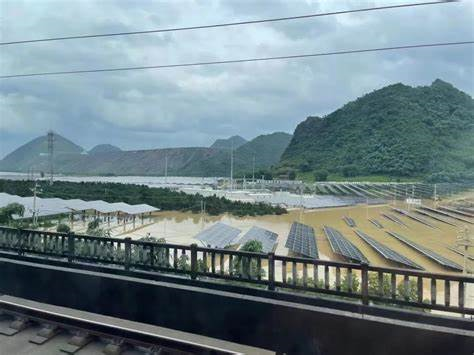Heavy Rainfall Strikes! How Can Photovoltaic Power Stations Ensure Safe and Efficient Operation?
On June 24th at 10 am, the Central Meteorological Observatory issued a red rainstorm alert: since June 17th, the middle and lower reaches of the Yangtze River have experienced persistent heavy rainfall, with some areas in Anhui, Zhejiang, Jiangxi, Hubei, and Hunan accumulating 200-400 mm of rainfall, and local areas in Hunan and Anhui reaching 500-713 mm.According to the forecast, heavy rainfall will continue in southern China, and major floods will occur in the Pearl River basin.

When rainstorm and flooding strike, PV power stations face huge challenges. A large amount of mud and polluted water adhering to the PV module surfaces not only weakens the light absorption capability of the solar cells, but also directly reduces power generation efficiency. Even more seriously, the floodwater may submerge the entire power station, leading to moisture, corrosion, and even short circuits of electrical components, seriously affecting the normal operation of the power station. Therefore, strategies for PV power stations to prevent and respond to rainstorms and floods are crucial.

Below, we will introduce the response methods from the following aspects:
Waterproofing and Drainage are Key
To reduce the damage of heavy rainfall to PV power stations, the primary task is to ensure proper waterproofing and drainage. PV power stations should regularly inspect and clean the drainage system to ensure unobstructed drainage ditches. For PV stations located in low-lying areas, installing drainage pump stations can also improve the drainage capacity.
In the design process, we adhere to the principle of "prioritizing drainage, combining waterproofing and drainage". The waterproofing design will reasonably select materials and structures based on the usage, importance, regional environment, and functional requirements of the building.
Equipment Maintenance and Overhaul
In addition to drainage measures, PV power stations should also strengthen the daily maintenance and periodic overhaul of their equipment. Especially before the rainy season, comprehensive inspections of the PV modules should be conducted, and aging or damaged components should be replaced in a timely manner. In addition, the station's O&M personnel should closely monitor weather forecasts. Once a heavy rainfall warning is issued, they should take preventive measures in advance, such as reinforcing the PV brackets and checking the waterproofing performance of cable connections.
Safety Monitoring and Emergency Response
During heavy rainfall, PV power stations should strengthen safety monitoring and real-time monitoring of the station's operating status. Once abnormal conditions are detected, the emergency plan should be immediately activated, and professional personnel should be organized for on-site handling. At the same time, the station should maintain close contact with the local meteorological department to obtain the latest weather information, so as to take more accurate response measures.
Facing extreme weather such as heavy rainfall, the operators and managers of PV power stations need to remain highly vigilant and take scientific and effective measures to protect the safe operation of the stations. By strengthening waterproofing and drainage work, doing a good job in equipment maintenance and overhaul, and enhancing safety monitoring and emergency response capabilities, the damage to PV power stations from heavy rainfall can be minimized, ensuring the stable and efficient operation of the stations.
Warm Reminder
After the flood, the safety hazards of PV power stations cannot be ignored. There is a high risk of electric shock when approaching or contacting the connection between the PV inverter, solar panels, and power cables, as the damaged solar panels may have poor insulation. It is absolutely essential to avoid touching the PV equipment with bare hands, or take anti-electric shock measures (using rubber gloves and boots, etc.) to reduce the risk of electric shock and ensure personal and property safety!
In addition to rainstorms, what other weather conditions will affect PV power stations, and how should we respond to them?
Lightning Weather
PV power stations are usually installed outdoors or on rooftops, and their distribution lines run from outdoors to indoors and then back outdoors, often being attacked by lightning strikes. Therefore, it is necessary to have proper lightning protection, electromagnetic pulse protection, and earthing protection.
Well-designed PV power systems have lightning protection devices, and during routine maintenance, the status of these lightning protection modules needs to be monitored. If a lightning protection module fails, it should be replaced in a timely manner - generally, a green indicator light means the module is effective, and a red light means it has failed.
For users, methods such as isolation, clamping, equalization, filtering, grounding, and overcurrent protection can be used to eliminate lightning overvoltage, overcurrent, and electromagnetic pulses outside the equipment, and by keeping a certain safe distance from the grounding, the protection of various equipment can be achieved.
Hail Weather
Qualified modules must pass certain impact tests, usually involving 25 mm hail at a speed of 23 m/s. Only modules that pass this test can be sold on the market.
Of course, even modules that have passed the test may still be damaged after a hail storm, as the falling speed of hail is still quite high. For modules that have not undergone such rigorous testing, they are very likely to be damaged under a hail storm.
Therefore, after the hail weather, it is necessary to inspect the PV modules in time to see if there are any problematic modules, and if there is a problem, immediately send them back to the original factory for testing, and replace them with new ones.
Finally, for inclement weather, prevention-inspection-maintenance is indispensable.